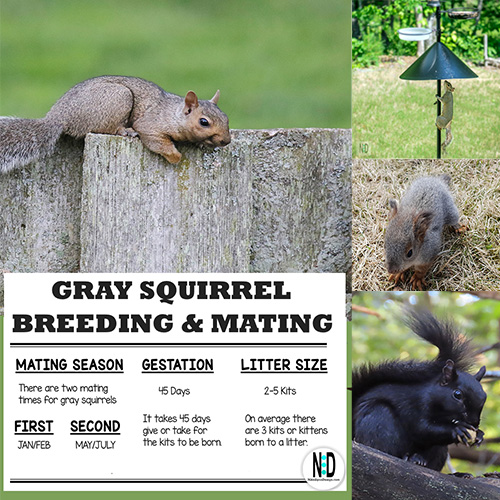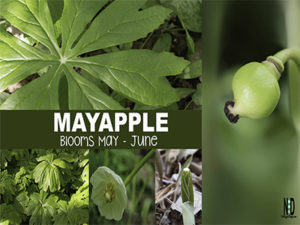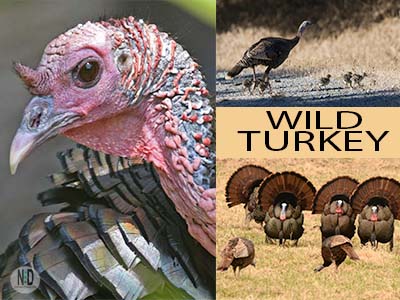There’s something magical about spotting an Eastern Gray Squirrel darting through the trees on a quiet summer morning, its bushy tail waving like a flag in the breeze.
These little creatures are more than just backyard visitors; they’re adaptable survivors, thriving in everything from wild woods to our doorsteps. As we explore their story, I’ll share some insights from my observations, with practical ways to appreciate—or manage—them in your daily life.
A Closer Look at Their Appearance and Adaptations
Eastern Gray Squirrels are the ultimate shape-shifters of the animal world, blending into their surroundings while occasionally surprising us with their variations. Generally, you’ll find them sporting a classic gray coat, but nature loves a twist—these squirrels can also appear in black or white forms, all thanks to the genes passed down through generations.
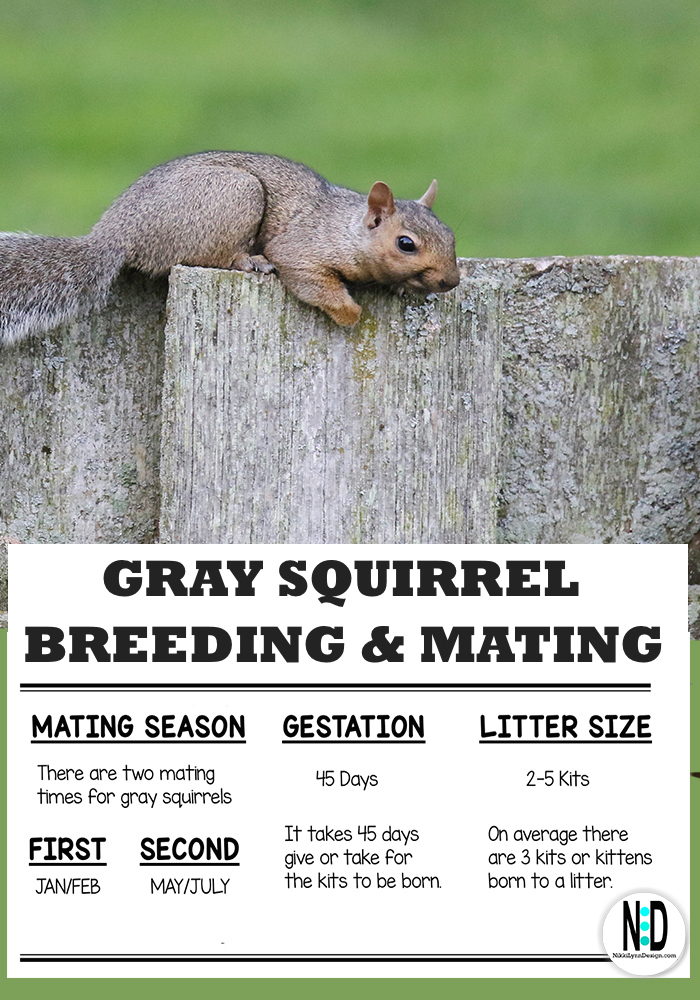
Key Qualities
Here’s a quick snapshot of their key qualities, based on notes from countless woodland wanders.
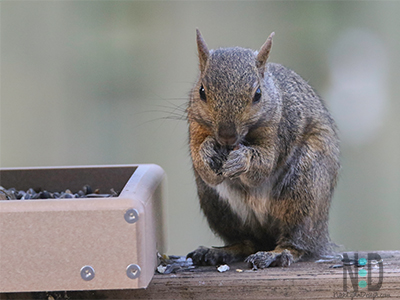
- Size:18-21 inches long, including that iconic tail
- Color Variations: Primarily gray, but genes can produce black or white individuals; it’s not uncommon to see a mix in the same litter, as if mixing up a palette of surprises.
- Tail: Bushy and banded with brown and black hairs, often tipped with white—perfect for balance and signaling during leaps.
- Other Traits: Compact bodies with sharp claws and bright eyes that sparkle with curiosity.
- Forages: acorn, hickory & walnuts, corn, berries.
Where They Live and How They Behave

These squirrels are true generalists, calling home everything from mature hardwood and deciduous forests to bustling urban parks. Here in the Midwest, I’ve seen them flourish in rural woodlots and city backyards, navigating traffic and bird feeders. They’re most active during the day, especially in the warmer months, when the days are long and food is plentiful.
Their behavior is a mix of playful and practical. They forage for acorns, hickory nuts, walnuts, corn, berries, plants, and fruits, often stashing extras for leaner times. I love watching them at my feeder, where they’ll acrobatically hang upside down to snag a seed, turning a simple meal into a spectacle. But as with any wild neighbor, it’s wise to observe from a distance and respect their space—after all, they’re not pets, and sudden movements can startle them.
Breeding, Life Cycles, and Family Dynamics
The Eastern Gray Squirrel’s family life is as seasonal as the forests they inhabit. They typically mate twice a year: once in the depths of winter (January and February), with kits born in cozy tree cavities, and again in late spring or early summer (May through July), when leaf nests high in the branches become nurseries.
Gestation & Litter Sizes
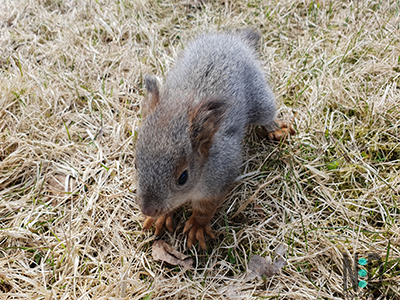
The gestation period is about 45 days, leading to litters of 2-5 kits, with an average of three little ones per litter.
From my backyard sightings, it’s heartwarming to see a mother squirrel teaching her young to forage, though it can sometimes lead to chaos. These kits grow quickly, venturing on their own within a few months, carrying on the cycle in their ever-adapting world.
Color Differences in Gray Squirrels
I’ve often marveled at how these color differences arise from simple genetics. In my experience, a pair of gray squirrels might produce a litter with gray and black kits, a reminder of nature’s endless creativity. It’s like flipping through a family photo album—each squirrel tells a story of adaptation.
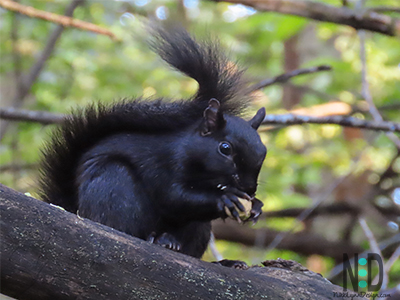
The gray squirrels carry the genes producing the black & white squirrels you often see.
When the proper combination of genes is produced in the mating grays, the black phase may appear after several generations of grays.
There may be both black and gray in the same litter.
The Love-Hate Side: Squirrels as Backyard Nuisances
Ah, here’s where things get real—squirrels can be as endearing as they are exasperating. On one hand, their antics bring joy; on the other, they might raid bird feeders, dig up flower bulbs, or even sneak into garages. Scaring off feathered friends and creating messes. In urban or suburban spots, they’ve been known to cause power outages by meddling with electrical lines, turning a peaceful evening into an unexpected adventure.
It’s a classic love-hate relationship. Some folks, like me on lazy summer days, enjoy tossing a few extra nuts to watch them play. Others prefer to keep them at bay. If you’re in the latter camp, here are some practical tips I’ve gathered from my experiences.
Tips To Keep The Squirrels At Bay
Below are some of the most common issues that people complain about when deals with squirrels.
1.) Change To Safflower Seed
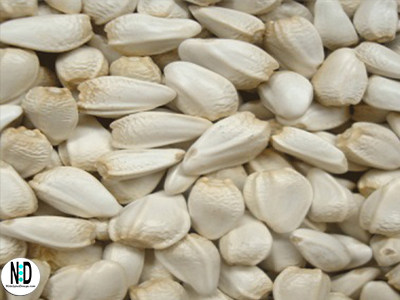
If you wish to keep squirrels from eating seed at your feeder, change to safflower seed.
Feed your birds safflower seed to help keep squirrels out of your feeders. Besides keeping squirrels out of your feeder, it discourages many other pesky larger birds from visiting.
2.) Baffles Prevent Squirrels From Climbing Poles

Use squirrel-proof feeders with weight-sensitive perches or baffles to discourage uninvited guests.
Baffles are cone-shaped barrier structures placed on the pole between the feeder and the ground. The baffle doesn’t allow the squirrel to climb up the pole to the feeder.
I suggest placing the feeder in an open space in your yard away from trees and bushes. You don’t want the squirrels jumping from a tree as an alternative to climbing the pole.
3.) Trim Tree Branches and Bushes

Seal entry points to attics and garages, and trim branches near your roof to limit access. Always handle encounters humanely—perhaps by using natural repellents like spicy sprays.
To keep squirrels from being able to jump from the trees to poles and feeders, you can prune them back.
Cut the limbs within a branch-to-branch jumping distance above the feeders and poles, opening up and clearing the space.
4.) Garden Protection

Cover fall bulbs with wire mesh or plant squirrel-resistant species like daffodils.
I’ve found that a simple fence around raised garden beds works wonders in my yard.
Want To Attract Squirrels?
Feed Them At Platform Feeders
If you are a fan of feeding squirrels, they eat a variety of seeds and nuts at platform feeders.
- Black sunflower seeds
- Corn
- Assortment of berries
- Assortment of nuts
Collect Nuts and Corn In Fall
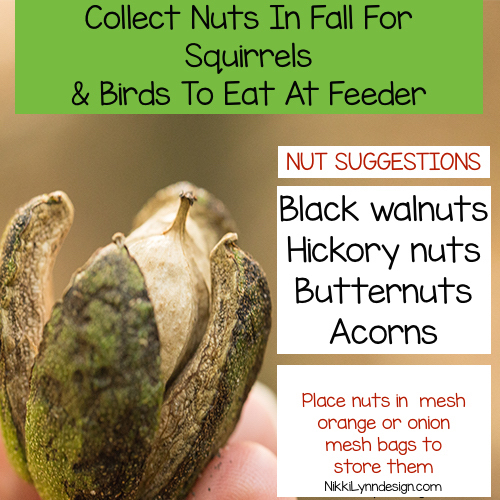
When out on nature walks or even in your backyard, collect a variety of nuts. Squirrels love nuts, and so do many birds, like woodpeckers, blue jays, nuthatches, and chickadees.
If you have a wealth of nuts available, collect and save them.
Use the nuts in your feeders during the winter months.
Do you have a farmer who raises a field of corn to feed their cattle or pigs? When the farmer cuts down the corn, they will leave some stalks in the field standing, free for the asking.
Remember, while they’re clever and fun to observe, it’s best to appreciate them from afar and avoid direct interaction for your safety and theirs.
Wrapping Up: Embracing the Squirrel Spirit
Getting to know the Eastern Gray Squirrel has deepened my connection to the outdoors, reminding me that even in our busy lives, a bit of wildness is always nearby—whether in a shady forest or a suburban backyard on a summer morning like today. They’re not just pests; they’re resilient storytellers of the natural world, adapting to whatever comes their way.
What about you? Have you had a squirrel raid your garden or become an unexpected friend? I’d love to hear your tales in the comments below—let’s swap stories and tips for harmonious living with these furry acrobats. If this sparks your curiosity, step outside with a cup of coffee and keep an eye out; you never know what delightful drama might unfold.
AFFILIATE POLICY: Posts on this site may contain links to outside vendors that pay me a commission when you purchase from them, at no additional cost to you. Thank you for supporting this site!
